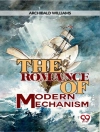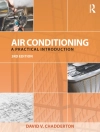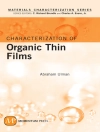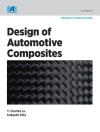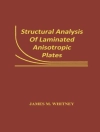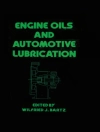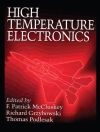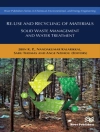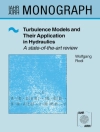Beam theories are exploited worldwide to analyze civil, mechanical,
automotive, and aerospace structures. Many beam approaches have
been proposed during the last centuries by eminent scientists such
as Euler, Bernoulli, Navier, Timoshenko, Vlasov, etc. Most of
these models are problem dependent: they provide reliable results
for a given problem, for instance a given section and cannot be
applied to a different one.
Beam Structures: Classical and Advanced Theories proposes
a new original unified approach to beam theory that includes
practically all classical and advanced models for beams and which
has become established and recognised globally as the most
important contribution to the field in the last quarter of a
century.
The Carrera Unified Formulation (CUF) has hierarchical
properties, that is, the error can be reduced by increasing the
number of the unknown variables. This formulation is extremely
suitable for computer implementations and can deal with most
typical engineering challenges. It overcomes the problem of
classical formulae that require different formulas for tension,
bending, shear and torsion; it can be applied to any beam
geometries and loading conditions, reaching a high level of
accuracy with low computational cost, and can tackle problems that
in most cases are solved by employing plate/shell and 3D
formulations.
Key features:
* compares classical and modern approaches to beam theory,
including classical well-known results related to Euler-Bernoulli
and Timoshenko beam theories
* pays particular attention to typical applications related to
bridge structures, aircraft wings, helicopters and propeller
blades
* provides a number of numerical examples including typical
Aerospace and Civil Engineering problems
* proposes many benchmark assessments to help the reader
implement the CUF if they wish to do so
* accompanied by a companion website hosting dedicated software
MUL2 that is used to obtain the numerical solutions in the book,
allowing the reader to reproduce the examples given in the book as
well as to solve other problems of their own href=’http://www.mul2.com/’>www.mul2.com
Researchers of continuum mechanics of solids and structures and
structural analysts in industry will find this book extremely
insightful. It will also be of great interest to graduate and
postgraduate students of mechanical, civil and aerospace
engineering.
Inhaltsverzeichnis
Preface.
Introduction.
References.
1 Fundamental Equations of Continuous Deformable Bodies.
1.1 Displacement, strain and stresses.
1.2 Equilibrium Equations in term of Stress Components and Boundary Conditions.
1.3 Strain Displacement Relations.
1.4 Constitutive Relations: Hooke’s Law.
1.5 Displacement Approach via Principle of Virtual Displacements.
References.
2 The Euler-Bernoulli and Timoshenko Theories.
2.1 The Euler-Bernoulli Model.
2.1.1 Displacement field.
2.1.2 Strains.
2.1.3 Stresses and stress resultants.
2.1.4 Elastica.
2.2 The Timoshenko Model.
2.2.1 Displacement Field.
2.2.2 Strains.
2.2.3 Stresses and stress resultants.
2.2.4 Elastica.
2.3 Bending of a cantilever beam: EBBT and TBT solutions.
2.3.1 EBBT solution.
2.3.2 TBT solution.
References.
3 A refined beam theory with in-plane stretching: the complete linear expansion case, CLEC.
3.1 The CLEC displacement field.
3.2 The importance of linear stretching terms.
3.3 A Finite Element based on CLEC.
Further Readings.
4 EBBT, TBT, and CLEC in Unified Form.
4.1 Unified Formulation of CLEC.
4.2 EBBT and TBT as particular cases of CLEC.
4.3 Poisson Locking and its Correction.
4.3.1 Kinematic considerations on strains.
4.3.2 Physical considerations on strains.
4.3.3 First remedy: use of higher-order kinematics.
4.3.4 Second remedy: modification of elastic coefficients.
References.
5 Carrera Unified Formulation and Refined Beam Theories.
5.1 Unified Formulation.
5.2 Governing Equations.
5.2.1 Strong Form of the Governing Equations.
5.2.2 Weak Form of the Governing Equations.
References.
Further Readings.
6 The parabolic, cubic, quartic and N-order beam theories.
6.1 The second-order beam model, N = 2.
6.2 The third-order, N = 3, and the fourth-order, N = 4, beam models
6.3 N-order beam models.
Further Readings.
7 CUF Beam Finite Element Models: Programming and Implementation Issue Guidelines.
7.1 Preprocessing and Input Descriptions.
7.1.1 General FE Inputs.
7.1.2 Specific CUF Inputs.
7.2 FEM Code.
7.2.1 Stiffness and Mass Matrix.
7.2.2 Stiffness and Mass Matrix Numerical Examples.
7.2.3 Constraints and Reduced Models.
7.2.4 Load vector.
7.3 Postprocessing.
7.3.1 Stresses and Strains.
References.
8 Shell Capabilities of Refined Beam Theories.
8.1 C-Shaped Cross-Section and Bending-Torsional Loading.
8.2 Thin-Walled Hollow Cylinder.
8.2.1 Static Analysis: Detection of Local Effects due to a Point Load.
8.2.2 Free Vibration Analysis: Detection of Shell-Like Natural Modes.
8.3 Static and Free Vibration Analyses of an Airfoil-Shaped Beam.
8.4 Free Vibrations of a Bridge-Like Beam.
References.
9 Linearized Elastic Stability.
9.1 Critical Buckling Load Classic Solution.
9.2 Higher-Order CUF Models.
9.2.1 Governing equations fundamental nucleus.
9.2.2 Closed form analytical solution.
9.3 Examples.
References.
10 Beams Made of Functionally Graded Materials.
10.1 Functionally Graded Materials.
10.2 Material Gradation Laws.
10.2.1 Exponential gradation law.
10.2.2 Power gradation law.
10.3 Beam Modeling.
10.4 Examples.
References.
11 Multi-Model Beam Theories via the Arlequin Method.
11.1 Multi-Model Approaches.
11.1.1 Mono-theory approaches.
11.1.2 Multi-theory approaches.
11.2 The Arlequin Method in the context of the Unified Formulation.
11.3 Examples.
References.
12 Guidelines and Recommendations.
12.1 Axiomatic and Asymptotic Methods
12.2 The Mixed Axiomatic/Asymptotic Method.
12.3 Load effect.
12.4 Cross-section effect.
12.5 Output location effect.
12.6 Reduced models for different error inputs.
References.
Index.
Über den Autor
Erasmo Carrera, Politecnico di Torino, Italy
Erasmo Carrera is Professor of Aerospace Structures and Computational Aeroelasticity and Deputy Director of Department of Aerospace Engineering at the Politecnico di Torino. He has authored circa 200 journal and conference papers. His research has concentrated on composite materials, buckling and postbuckling of multilayered structures, non-linear analysis and stability, FEM; nonlinear analysis by FEM; development of efficient and reliable FE formulations for layered structures, contact mechanics, smart structures, nonlinear dynamics and flutter, and classical and mixed methods for multilayered plates and shells.
Gaetano Giunta, Centre de Recherche Public Henri Tudor, Luxembourg
Gaetano Giunta is a research scientist in the Department of Advanced Materials and Structures in the Centre de Recherche Public Henri Tudor.
Marco Petrolo, Politecnico di Torino, Italy
Marco Petrolo is a research scientist in the Department of Aeronautics and Space Engineering at the Politecnico di Torino.


